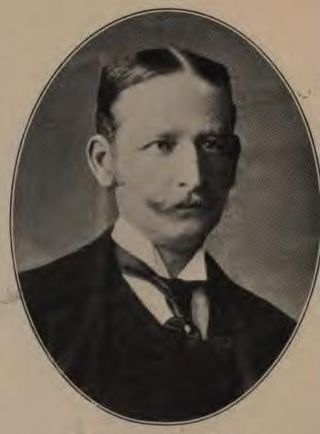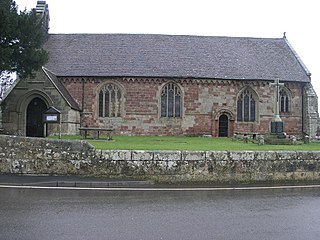
Earl of Longford is a title that has been created twice in the Peerage of Ireland.

Earl Grey is a title in the peerage of the United Kingdom. It was created in 1806 for General Charles Grey, 1st Baron Grey. In 1801, he was given the title Baron Grey of Howick in the County of Northumberland, and in 1806 he was created Viscount Howick in the County of Northumberland, at the same time as he was given the earldom. A member of the prominent Grey family of Northumberland, Earl Grey was the third son of Sir Henry Grey, 1st Baronet of Howick.

Earl of Harrowby, in the County of Lincoln, is a title in the Peerage of the United Kingdom. It was created in 1809 for the prominent politician and former Foreign Secretary, Dudley Ryder, 2nd Baron Harrowby. He was made Viscount Sandon, of Sandon in the County of Stafford, at the same time, which title is used as a courtesy title by the heir apparent to the earldom. His son, the second Earl, held office under Lord Palmerston as Chancellor of the Duchy of Lancaster and Lord Privy Seal. He was succeeded by his eldest son, the third Earl. He was a Conservative politician and notably served as President of the Board of Trade from 1878 to 1880.

Viscount Hill, of Hawkstone and of Hardwicke in the County of Salop, is a title in the Peerage of the United Kingdom. It was created in 1842 for General Rowland Hill. He had already been created Baron Hill, of Almaraz and of Hawkstone in the County of Salop, in 1814, with remainder to the heirs male of his body, and Baron Hill, of Almarez and of Hawkestone and Hardwicke in the County of Salop, in 1816, with remainder to the heirs male of his elder brother John Hill. The viscountcy was created with the same special remainder. On the first Viscount's death in 1842, the barony of 1814 became extinct as he had no male issue, while he was succeeded in the barony of 1816 and the Viscountcy according to the special remainders by his nephew Sir Rowland Hill, 4th Baronet. His son, the 3rd Viscount, sat as a Conservative Member of Parliament for Shropshire North. In 1875, he assumed by Royal licence the additional surname of Clegg, which was that of his maternal grandfather. He inherited financial problems from his father which led to the breakup and sale of the family estates.

Baron Stanley of Alderley, in the County of Chester, is a title in the Peerage of the United Kingdom. It was created in 1839 for the politician and landowner Sir John Stanley, 7th Baronet.

Baron Northbrook, of Stratton in the County of Southampton, is a title in the Peerage of the United Kingdom. It was created in 1866 for the Liberal politician and former Chancellor of the Exchequer, Sir Francis Baring, 3rd Baronet. The holders of the barony represent the genealogically senior branch of the prominent Baring family. The name Northbrook is derived from a tithing of the local parish.

Baron Rea, of Eskdale in the County of Cumberland, is a title in the Peerage of the United Kingdom. It was created in 1937 for the businessman and Liberal politician Sir Walter Rea, 1st Baronet, who had earlier represented Scarborough, Bradford North and Dewsbury in the House of Commons. He had already been created a Baronet, of Eskdale in the County of Cumberland, in 1935. He was succeeded by his eldest son, the second Baron. During the Second World War he served as personal staff officer to Brigadier Colin Gubbins, the Head of SOE, a key British intelligence and guerrilla operations agency. Lord Rea served as Leader of the Liberal Party in the House of Lords from 1955 to 1967. His daughter, the Right Hon. Ann Felicity Rea, married SOE veteran Malcolm Munthe in 1945. His nephew, the third Baron, who succeeded in 1981, was a physician. He was one of the ninety elected hereditary peers elected to remain in the House of Lords after the passing of the House of Lords Act 1999, and sat on the Labour benches. As of 2020 the titles are held by his son, the fourth Baron, who succeeded his father in that year.

Wem is a market town and civil parish in Shropshire, England, 9 miles (14 km) north of Shrewsbury and 9 miles (14 km) south of Whitchurch.
Shropshire was established during the division of Saxon Mercia into shires in the 10th century. It is first mentioned in 1006. After the Norman Conquest it experienced significant development, following the granting of the principal estates of the county to eminent Normans, such as Roger De Montgomery and his son Robert de Bellême.

Prees is a village and civil parish in north Shropshire, near the border between England and Wales. Its name is Celtic and means "brushwood".

Albert James Edmondson, 1st Baron Sandford, was a British Conservative Party politician. He was the oldest son of James Edmondson, the north London property developer.
Richard Newport, 1st Baron Newport was an English landowner and politician who sat in the House of Commons at various times between 1614 and 1629. He supported the Royalist cause in the English Civil War and was created Baron Newport in 1642.
John George Weld Weld-Forester, 2nd Baron Forester PC, was a British Tory politician. He served as Captain of the Honourable Corps of Gentlemen-at-Arms under Sir Robert Peel from 1841 to 1846.

Frederick George Banbury, 1st Baron Banbury of Southam, known as Sir Frederick Banbury, 1st Baronet from 1903 to 1924, was a British businessman, Conservative Member of Parliament and animal rights activist, serving as chairman of the Royal Society for the Prevention of Cruelty to Animals.
Commander John Cyril Edmondson, 2nd Baron Sandford, DSC was a decorated Royal Navy officer, Church of England clergyman, conservationist and Conservative politician. As a junior minister charged with a review of policy on national parks, he formulated what became known as the "Sandford principle": if there is a conflict between leisure use of the National Park, and protecting its natural state, the state of the park must be preserved.

Edward Clive, 1st Earl of Powis,, known as the Lord Clive between 1774 and 1804, was a British politician who sat in the House of Commons from 1774 to 1794 when he was raised to the peerage as Baron Clive.
Sir John Corbet, 1st Baronet of Stoke upon Tern was an English politician who represented Shropshire in the House of Commons of the long Parliament. As a moderate Puritan, he was noted before the English Civil War for his campaigns against extra-parliamentary taxation, and for waging a long running dispute over control of his parish church at Adderley which led to his imprisonment. He was a notable member of the Shropshire county committee, responsible for pursuing the war against the royalists. As a part of a Presbyterian middle group in Parliament, he was one of those secluded from parliament by Pride's Purge, and was stripped of his remaining public offices after the Restoration.
Francis Richard John Sandford, 1st Baron Sandford,, known as Sir Francis Sandford between 1863 and 1891, was a British civil servant. He was Permanent Under-Secretary of State for the Committee of Council on Education between 1870 and 1884, in which role he was instrumental in implementing the Elementary Education Act of 1870.

St Mary's Church is in the village of Edstaston, in the civil parish of Wem Rural, Shropshire, England. It is an active Anglican parish church in the deanery of Wem and Whitchurch, the archdeaconry of Salop, and the diocese of Lichfield. Its benefice is united with those of St Chad, Prees, Holy Emmanuel, Fauls, Christ Church, Tilstock, and St Mary, Whixall. The church is recorded in the National Heritage List for England as a designated Grade I listed building. It is described as "one of the most complete Romanesque buildings in Shropshire".












